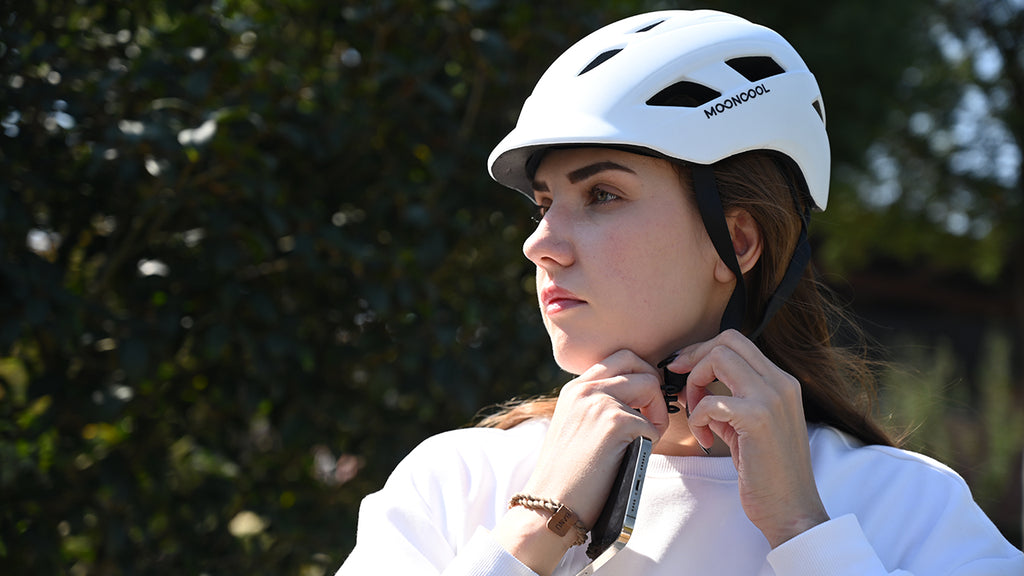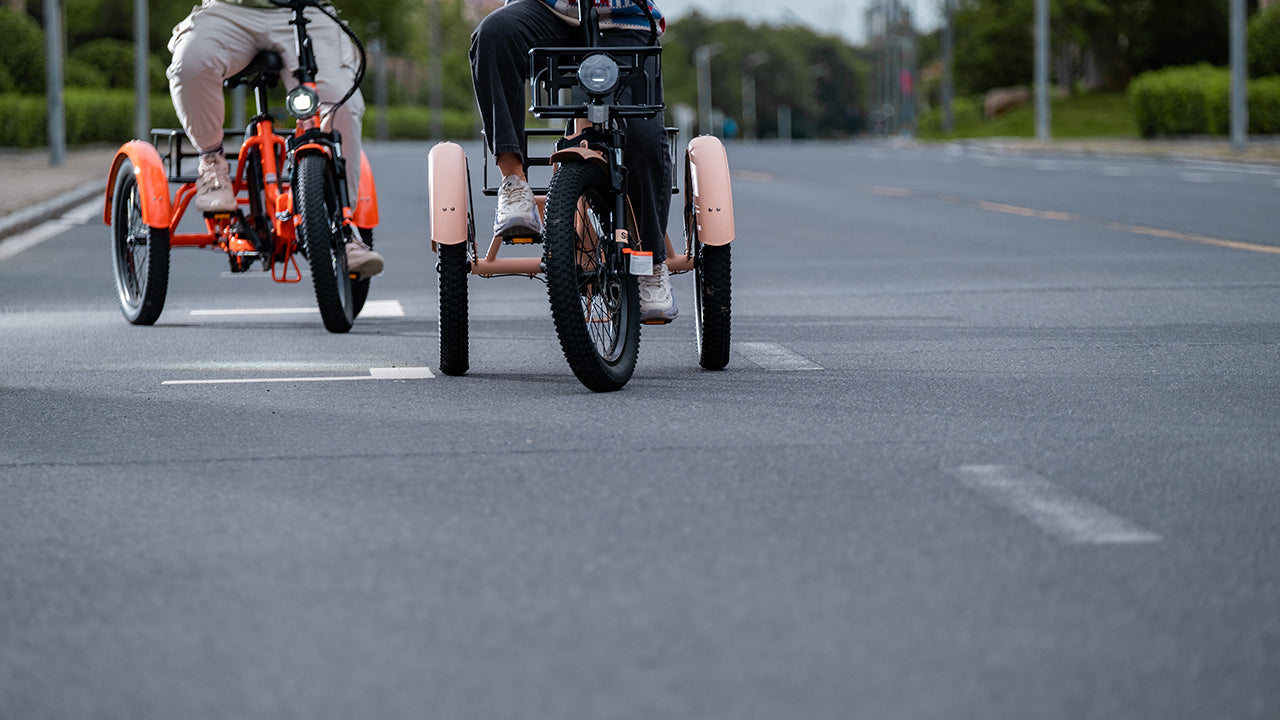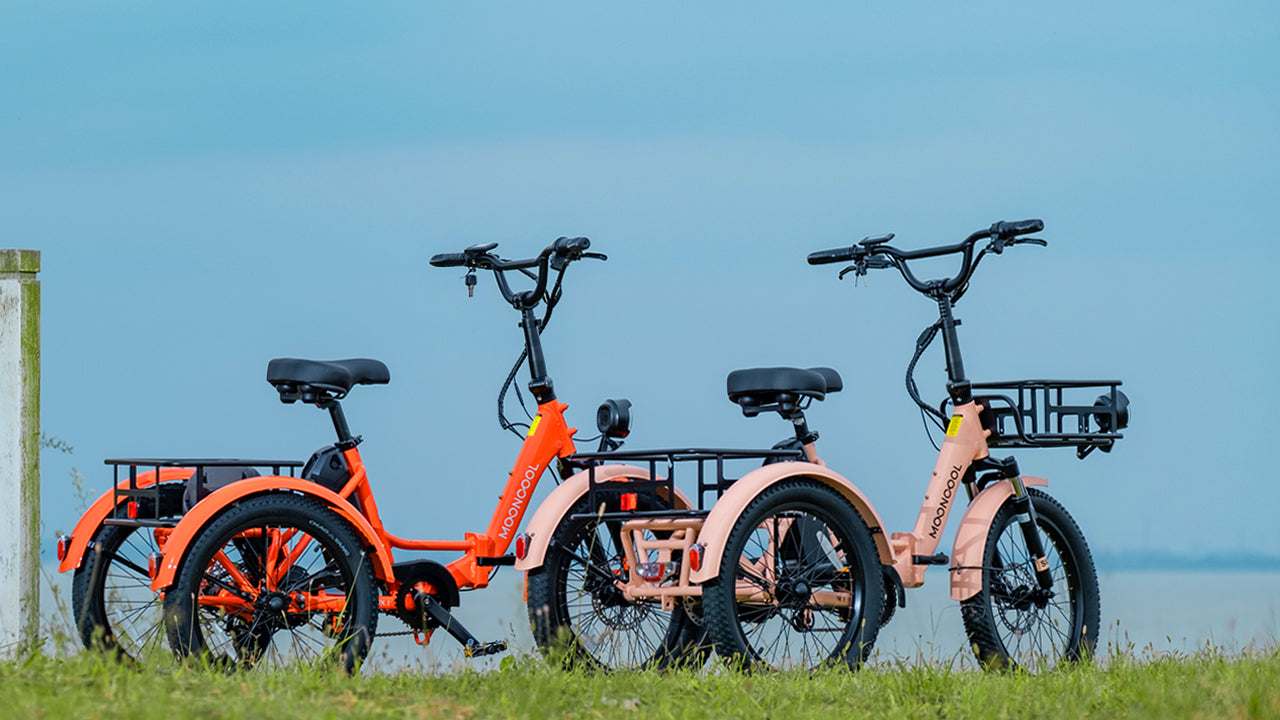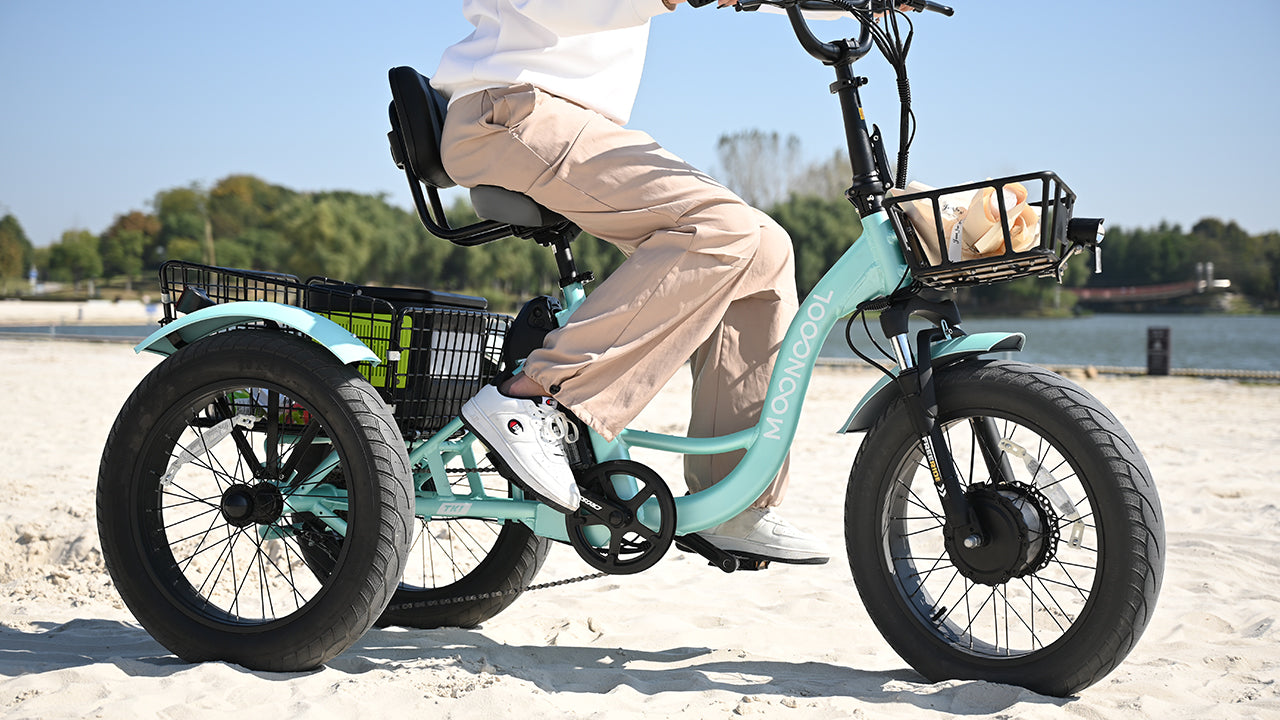Hitting the open road on a cycle usually requires strong legs and stability. But electric trikes, or E-trikes, are changing that by giving people with limited mobility an easier way to ride. These 3-wheeled cycles with power-assist are making cycling possible for many undergoing rehab.
With customized E-trikes becoming popular in therapy centers, people with disabilities now have access to the physical and mental boost of pedaling around town or scenic paths. This low-impact, flexible exercise is transforming rehab programs across the world. So let's take a closer look at how E-trikes are making recovery smoother for all.

Introduction to Electric Trikes in Rehabilitation
What is An E-trike?
An electric trike is a three-wheeled pedal cycle that is powered by an electric motor and battery. Unlike standard bicycles and regular tricycles, E-Trikes allow riders to propel themselves using both pedal power and electric assistance. This makes cycling easier, especially for people with limited mobility or physical impairments.
Advantages of E-Trikes in Rehab
In recent years, customized and adaptive E-Trikes have become popular in rehabilitation settings as they provide low-impact exercise with medical and psychological benefits. E-Trikes are very different from traditional rehab equipment like stationary bikes or treadmills. Their tricycle configuration enhances stability and balance, while the electric motor offers pedaling assistance without straining joints or muscles. This makes E-Trikes an ideal solution for rehabilitation programs aimed at rebuilding physical strength, coordination, flexibility, and endurance in a safe manner.
Research Findings on E-Trikes in Therapy
A study in 2019 by I Made Londen Batan tested a tricycle for physical therapy and stroke rehabilitation. The study found that stroke patients using the tricycle for therapy over one month showed significant improvements in vital signs, heart recovery, oxygen uptake, and energy levels compared to patients doing standard therapy without the tricycle. Patients pedaling the trike increased their cardiorespiratory fitness nearly 50% more than non-pedaling patients. The researchers concluded that the customized delta tricycle provided substantial benefits for stroke rehabilitation and recovery of leg movement.
Key Advantages of Using E-Trikes in Rehabilitation
E-Trikes offer a range of unique advantages that make them well-suited for rehabilitative therapy across diverse age groups and disability categories:
1. Improved Physical Capabilities
Riding E-Trikes can help improve muscle strength, balance, motor skills, and cardiovascular fitness. The pedaling motion engages all major muscle groups in the legs, arms, and core. Maintaining balance while steering the trike also strengthens core muscles and enhances coordination. This boosted physical capability can aid recovery from injuries, strokes, neurological conditions, and other mobility issues.
For elderly patients, cycling on E-Trikes can prevent muscle atrophy and osteoporosis by stimulating muscles and bones. It also maintains joint flexibility, reducing the stiffness that comes with aging. Consistent E-Trike exercise leads to significant improvements in stamina, energy levels, and functional abilities.
2. Psychological Benefits
Beyond the physical gains, using E-Trikes also provides a sense of joy and accomplishment for patients. The ability to independently move around and travel fosters self-confidence and improves mental health. Therapeutic triking can reduce anxiety, depression, and feelings of isolation for people undergoing rehabilitation. It also promotes neuroplasticity and cognitive function.
3. Safe Low-Impact Exercise
Recumbent tricycles are low-impact since the seat provides back support, and the three wheels ensure maximum stability. This makes E-Trikes ideal for patients who cannot withstand high-impact activities like running. The electric assist feature means people with chronic pain, neurological conditions, and other disabilities can cycle comfortably without excessive exertion.
More advantages of using e-trikes: Stay Active with E-Trikes: Gentle on Knees and Joints for Seniors' Fitness
How to Customize E-Trike Rehab Programs
To optimize recovery outcomes, E-Trike therapy needs customized programming that adapts to each patient's condition and goals. Important factors to consider include:
1. Age Group Customization
For adult patients, the focus of E-Trike customization is helping them regain physical functionality and mobility. Customized seating and pedal configurations help adults suffering from loss of strength or stamina steadily rebuild their endurance and confidence in an encouraging, low-impact manner.
For elderly patients, the priority is preventing further muscle atrophy and maintaining joint flexibility as they age. Handlebars and seats can be adjusted to suit seniors' needs for postural support and stability.

2. Disability-Specific Adaptations
E-trikes can be adapted with assistive devices, modifications, and safety gear to suit different disabilities and impairments:
- For those with limited upper body strength, E-Trikes can be equipped with customized pedals for ease of use, reduced strain, and greater stability.
- Those prone to seizures or cardiac issues can have E-Trikes fitted with medical monitors and safety cut-offs. Alarm systems provide alerts if needed.
- Harnesses, seat belts, and helmet straps keep patients of all categories secured on the trike. Safety flags, reflectors, and head/taillights can be added for visibility.
Electric bicycles can provide convenience for people with disabilities in many ways, if you want to learn more, you can browse How Electric Trikes Empower the Disabled with Enhanced Mobility?
3. Devel oping Suitable The rapy Regimens
To maximize the benefits of E-Trike rehab, suitable cycling regimens must be developed for each patient based on:
- Duration: Early-stage cycling sessions should be short (10-15 minutes) and then extended gradually as stamina improves. Mild to moderate sessions of 30-45 minutes are recommended for most.
- Frequency: Starting with 2-3 sessions per week and building up to 4-5 times weekly is ideal. Daily cycling may be an eventual goal but should be approached incrementally.
- Intensity: Light-intensity pedaling is advised initially, progressing to moderate resistance later. Adjustable electric assist enables customizing the effort required.
- Terrain: Smooth, paved terrain is best to start before venturing into more challenging outdoor trails. Gradual progression builds confidence.
- Assessment: Periodic fitness assessments help tailor regimens and progression plans. Adjustments are made based on measurable functional gains.
- Motivation: Group cycling sessions, real or virtual scenic tours, music, and games make E-Trike therapy engaging. Social motivation improves adherence.
Custom-crafted E-Trike therapy regimens tailored to each patient's current state enable safe, effective, and motivating rehabilitation. They act as roadmaps towards recovery goals.
How to Overcome Challenges in E-Trike Rehabilitation
While E-Trikes have proven rehab potential, there exist some challenges in implementation:
1. Ensuring Patient Safety
E-trikes allow independent mobility, but patients must be monitored for safety, especially those with cognitive conditions. Graduated training protocols should be implemented.
2. Accessibility and Affordability Concerns
Good quality adaptive trikes are expensive. Rehab centers must assess if insurance plans cover E-Trike therapy. Grants and community funding can aid in procuring trikes to make the therapy more accessible.
3. Policy Limitations
Healthcare policies and regulations differ across regions. Rehab centers should lobby local authorities and policymakers to include E-Trikes within approved therapeutic modalities covered by insurance. This will boost adoption.
4. Maintenance and Storage Needs
Staff must be trained in proper usage, maintenance, and storage procedures for E-Trikes. Space for storing trikes safely is required. Maintenance costs should be budgeted for.Explore more maintenance tips: Electric Trike Maintenance Tips: Keeping Your Trike in Top Condition
The Future of E-Trikes in Rehabilitation
With growing recognition of their benefits, E-Trikes will likely play a pivotal role in modern rehab programs. Some upcoming innovations and predictions include:
- More advanced electric motors and battery systems for lighter trikes that can traverse diverse terrains.
- IoT integration for remote monitoring of patient health metrics during cycling via wearables.
- VR integration for simulated riding experiences to build confidence before outdoor riding.
- Increased research on E-Trike therapy for various medical conditions to spur innovation and adoption across healthcare centers.
- Use of rehabilitation trikes beyond therapy - for general transportation, fitness, and recreation.
- Electric hand cycles for patients with lower body disabilities.
- Medicare coverage and insurance reimbursement for E-Trike therapy based on proven benefits.
Conclusion
E-trikes are transforming traditional notions of rehabilitation by enabling light exercise amidst mobility constraints. The physical and psychological benefits offered by electric trike therapy make it a promising new avenue for modern recovery programs seeking effective solutions. While some challenges exist around adoption, the future holds promise for E-Trikes as a mainstay of rehab. With continuous innovation and advocacy, E-Trikes can empower patients across the world with smoother pathways to recovery.





Leave a Comment
This site is protected by hCaptcha and the hCaptcha Privacy Policy and Terms of Service apply.